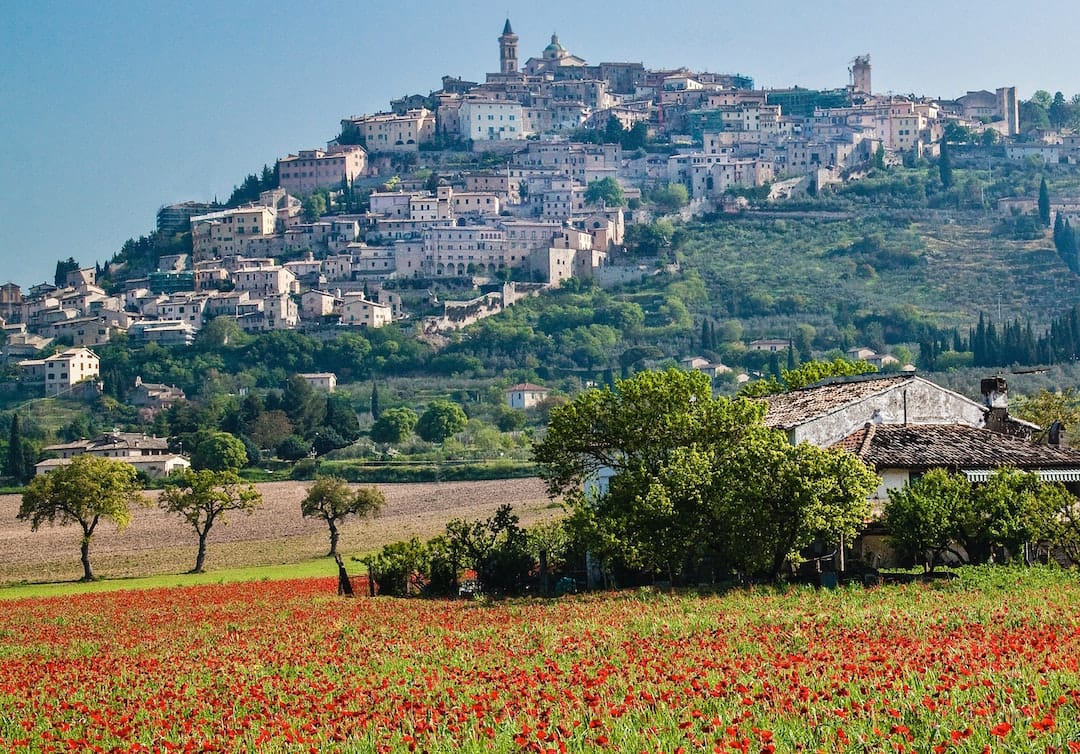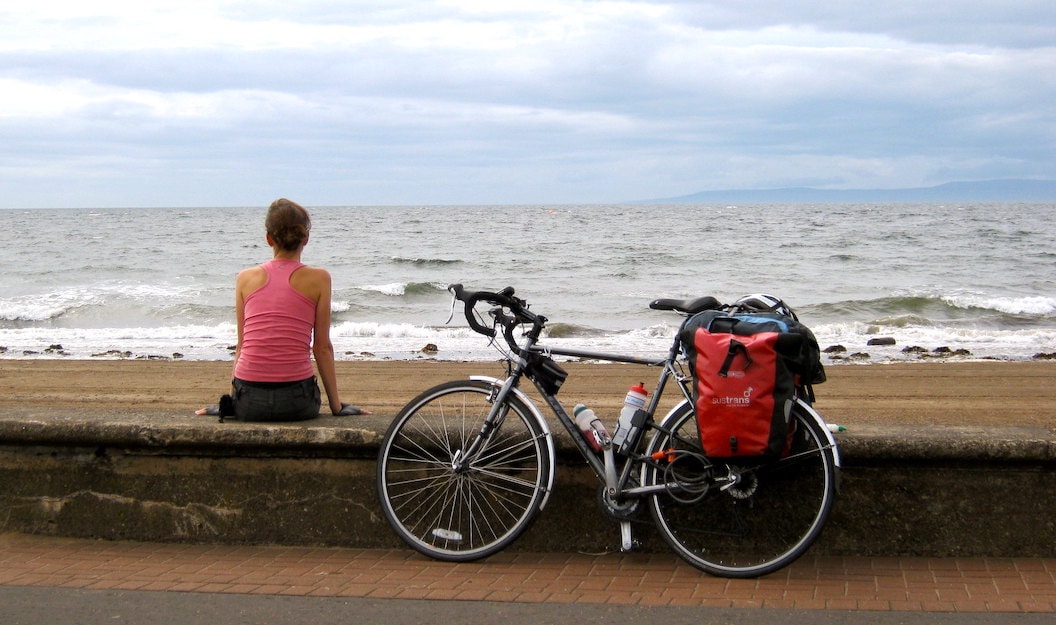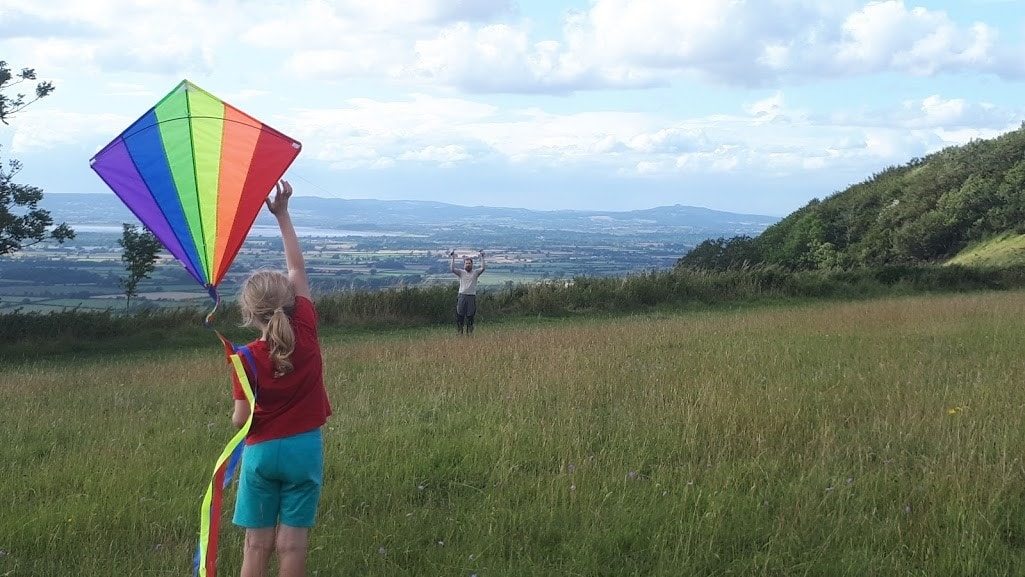
The medieval city of Perugia in Umbria, Italy, lies partway between Florence and Rome, in the foothills of the Apennine mountains.
Our holiday this year was to be a self-guided walking tour through Umbria, the first we had ever tried, with gentle 10-mile days, regular rest days, and our suitcases whisked to our next hotel, leaving us to walk unencumbered.
For many years I have been working with AirportWatch, a campaign that links groups and individuals opposing the negative environmental impacts of air travel. Given that Italy is within reasonable overland reach of the UK, I felt it would be at odds with my work to fly for our holiday. No such restriction applied to my husband, and with the added element of family and work commitments, he booked his flight.
"I felt it would be at odds with my work to fly for our holiday."
As I battled with the various train timetables, linking them with long distance coaches, leaving sufficient time to transfer from coach to train in cities, I could appreciate why those who identify with "Tågskryt" or "train bragging" feel they have earned the right. My husband's trip took little planning or careful consideration: just one website and the flight is booked. My trip had four different sections, each needing to connect with the other. It was certainly not easy, though there was plenty of satisfaction in fitting it all together and making it work.
The first leg was the Eurostar to Paris, and I found myself sitting next to a very interesting man, a lawyer, who seemed happy to chat all the way to Paris. He was a Eurostar aficionado, making the trip almost every week to see his partner, and much preferring the ease and convenience to the aeroplane. We found much common ground on issues of carbon and travel and governments, and set the world to rights all the way to the Gare du Nord. It is these encounters that make a great journey even more memorable.
I opted to walk across Paris to the coach station – pulling suitcase – despite it being at least two miles. Those two miles were full of the joie de vivre of Parisian life, passing the historic and tourist spots of Place de la Republique and La Bastille, observing the café culture while overhearing smatterings of conversations in colloquial French.
The overnight coach to Milan, the Ouibus, takes approximately 12 hours. The amenities were perfectly fine: a good, clean lavatory, USB chargers at each seat, and comfortable seats that reclined quite well. We stopped twice for the drivers to take a break, so there was an opportunity to buy food, though I had brought my own. Sensible passengers had brought neck pillows. Without one, I managed around 3-4 hours of fitful sleep.
We arrived in Milan as dawn was starting to break, and rolled through the relatively empty streets towards Lampugnano station. A taxi took me to the train station, housed in a remarkable, beautiful building – worth seeing in itself. I had planned several extra hours in case of delays, so had time to read my book, watch Italian workers and commuters drink their caffè lattes and eat their pastries, and explore the streets and landmarks near the station.
The remaining legs were by train: first, a clean, efficient intercity train to Florence, which flashed through the Italian countryside, then another, slower train to Perugia, which crawled through the gradually changing scenery of Tuscany.
The whole journey had taken little over 28 hours, including the lengthy just-in-case transfers I had planned in Paris and Milan.
Of course, it would have been much quicker to fly. On the return journey, my husband was back at Stansted while I was still somewhere between Florence and Milan. But by travelling overland I could gain an impression of just how far I had travelled. The journey covers around 1,000 miles or so. In the days when travel was by horse, it would have taken three weeks or more to complete. The overland route requires you to realise the geographical separation of places, and appreciate how remarkable it is that we travel huge distances now, that would have been hard to comprehend to earlier generations.
"Of course, it would have been much quicker to fly. But by travelling overland I could gain an impression of just how far I had travelled."
Travelling through so many regions, so many different landscapes, seeing the differing style of the buildings and forms of agriculture, makes the journey so much richer. An added delight on the return journey was crossing back across the Alps in the evening, seeing the mountains start to emerge, then travelling up the Aosta valley before going through the Mont Blanc tunnel. Just as night fell, we emerged to see Mont Blanc directly above us, shining in the moonlight, with a little light at its summit. These are the things that people miss when travelling by plane, views that people would pay good money to see.
In terms of cost, my journey and my husband’s flight plus an overnight hotel at Stansted were within about £10 of each other. Though emissions are difficult to calculate, the overland trip probably generated about one third as much CO2 as the plane.
There’s no denying that travelling by Ryanair and taking an hour and a half to Stansted would be easier. Less hassle. It would require less planning, less enterprise, less adventure. I would not have had to lift my suitcase up and down off trains so often, or wait for connections. I would have saved time, and had a night of more sound sleep.
But by travelling overland I gained so much in other ways, and now I am hooked. And as for the overnight coach – which was a fraction of the cost of the equivalent train, and therefore the cheapest alternative to a flight – I will have no hesitation at all in booking again.
I get the feeling that long-distance coach travel is like bus travel was in the UK 15-20 years ago – something you only did if you could afford nothing else.




